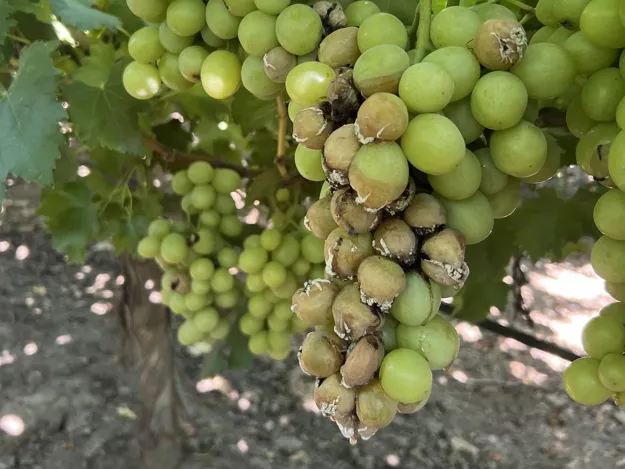Under normal circumstances, California’s table grape production peaks this time of year. However, volumes hitting the market are much lower this season due to the impact of Hurricane Hilary. In order to fill a void in California, table grape growing countries in South America are jumping on early. “Normally, Peru and Brazil don’t ship table grapes to the US until later in the season as they don’t want to compete with California,” says Ira Greenstein with Direct Source Marketing. “However, this time around they aren’t waiting as they see an opportunity to capture a window with strong pricing,” he commented.
Peru happened to have fruit ready early. The northern part of the country (Piura) was impacted by heavy rains this season. As a result, grape production is expected to be down 30 percent from last year. To avoid late-season rains this upcoming season, most of the fruit was pruned to come off early. The plan for Peru is to send this early fruit to the US market. While Brazil typically ships table grapes to the US in December and January, the country already has fruit on the water to the US East Coast right now. With the spot price of red seedless grapes ranging from $28 to $32 FOB and the price of green seedless grapes varying between $22 and $26, Peru and Brazil see an opportunity they want to jump on.

Increased quality
On a positive note, the quality of California’s table grapes will be improving in the next four to six weeks. “The late-season varieties had very low Brix levels at the time the hurricane hit, and they haven’t been impacted by the rains like the mid-season varieties have.” As a result, retail rejections are expected to come down in the next few weeks and higher quality fruit is on the horizon. With the quality of the fruit improving, California will likely bring fruit to market well into November. “Given that buyers will have more confidence in the later varieties, imports are not expected to just step in and take over the market,” shared Greenstein. However, will the market be able to sustain high spot pricing once fruit from three different regions is available?
Which fruit will retailers choose? “They are willing to pay for the best quality fruit,” said Greenstein. Depending on the quality, they may switch to imports, but as the quality of California table grapes improves, they are likely willing to support the growers in the San Joaquin Valley.”
New varieties and rainfall
It seems that newer proprietary table grape varieties haven’t responded well to large amounts of rainfall. “They weren’t bred to sustain major rain events.” Old varieties have fared better during excessive rain events. In response to last season’s rainfall, growers in Peru are spending millions of dollars to protect their grapes. Greenstein explained how some growers decide to cover each bunch individually with a small plate as well as investing in covering their entire ranches. “The plate acts as a protective cover over each bunch. It’s very labor intensive, but ultimately less expensive compared to covering the entire vineyard in plastic.”
 For more information:
For more information:
Ira Greenstein
Direct Source Marketing
Tel: +1 (914) 241-4434
ira@directsourcemktg.com
www.directsourcemktg.com

